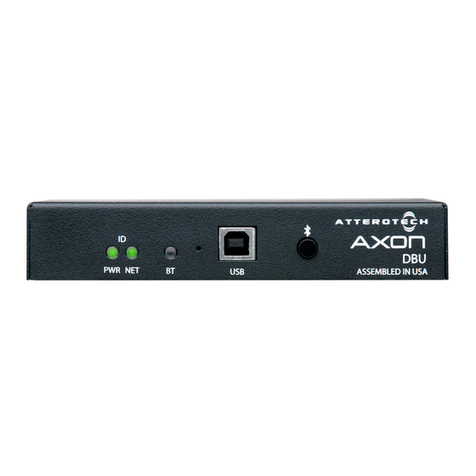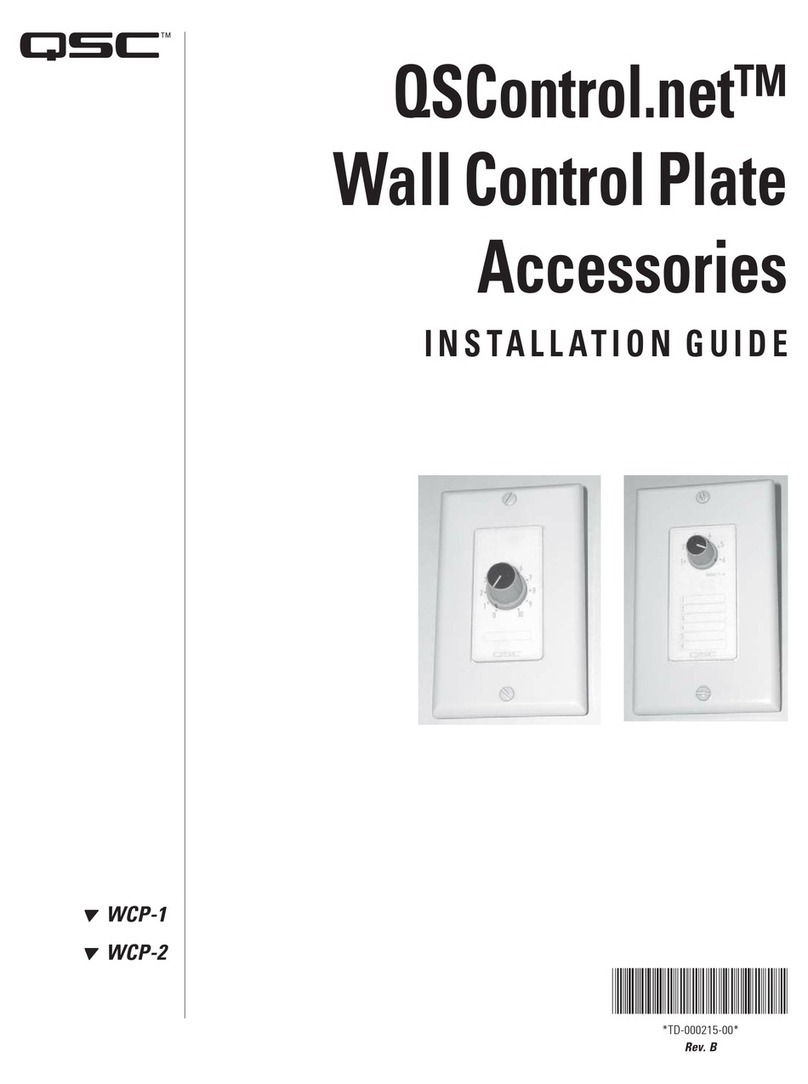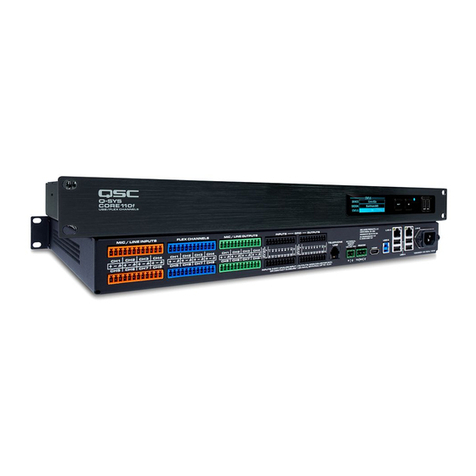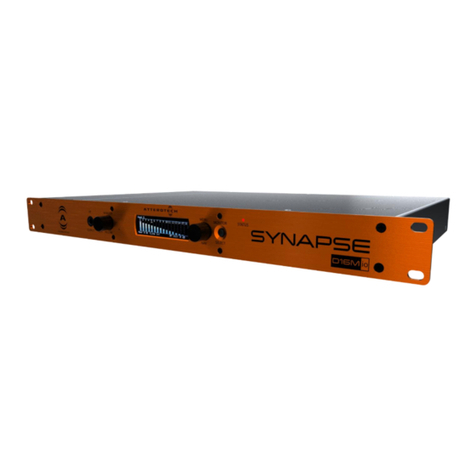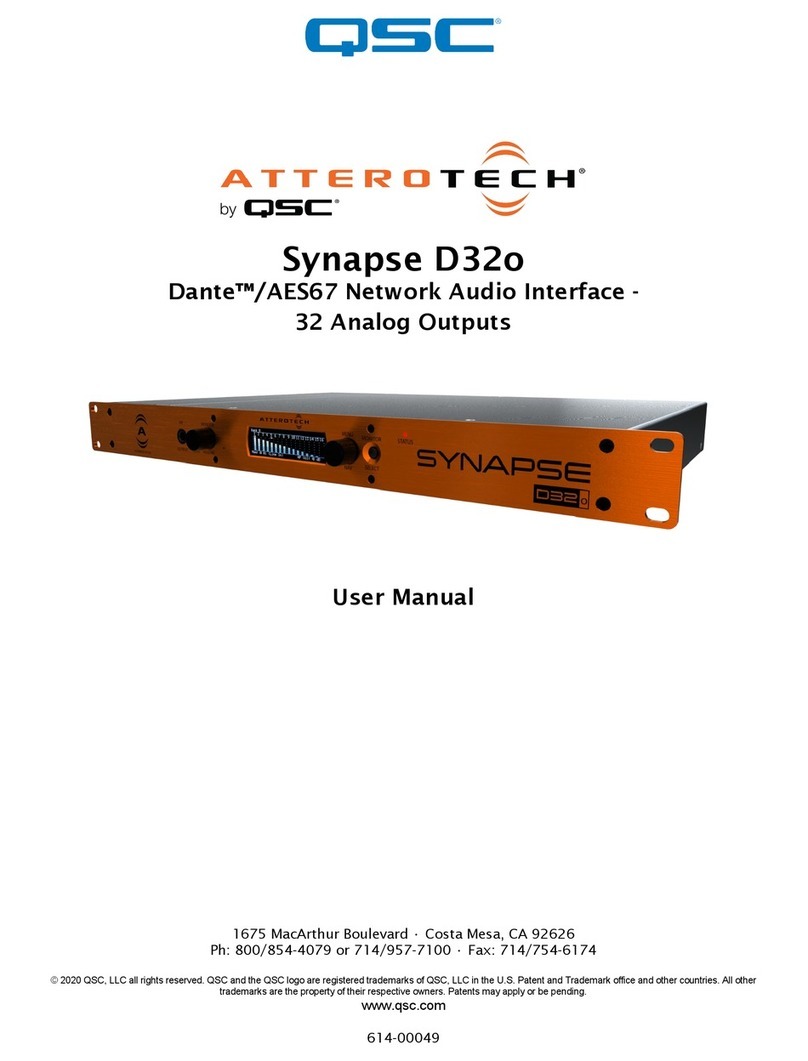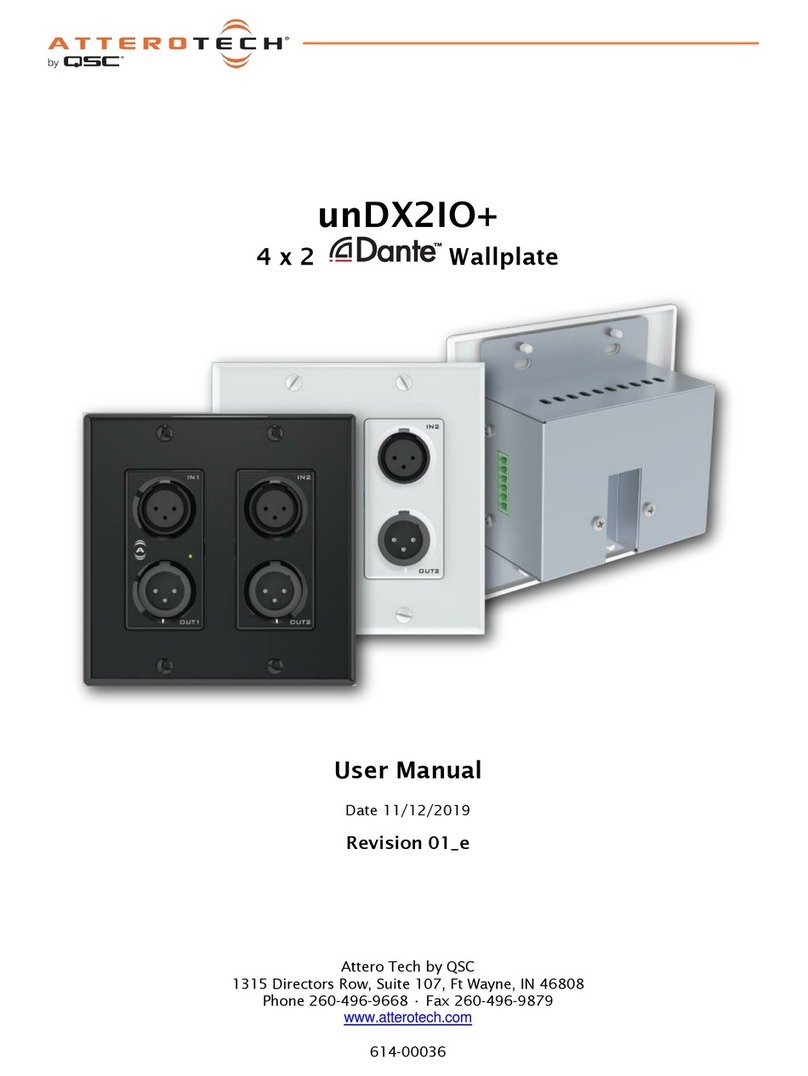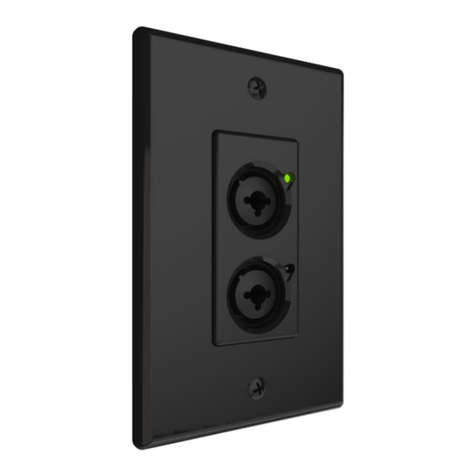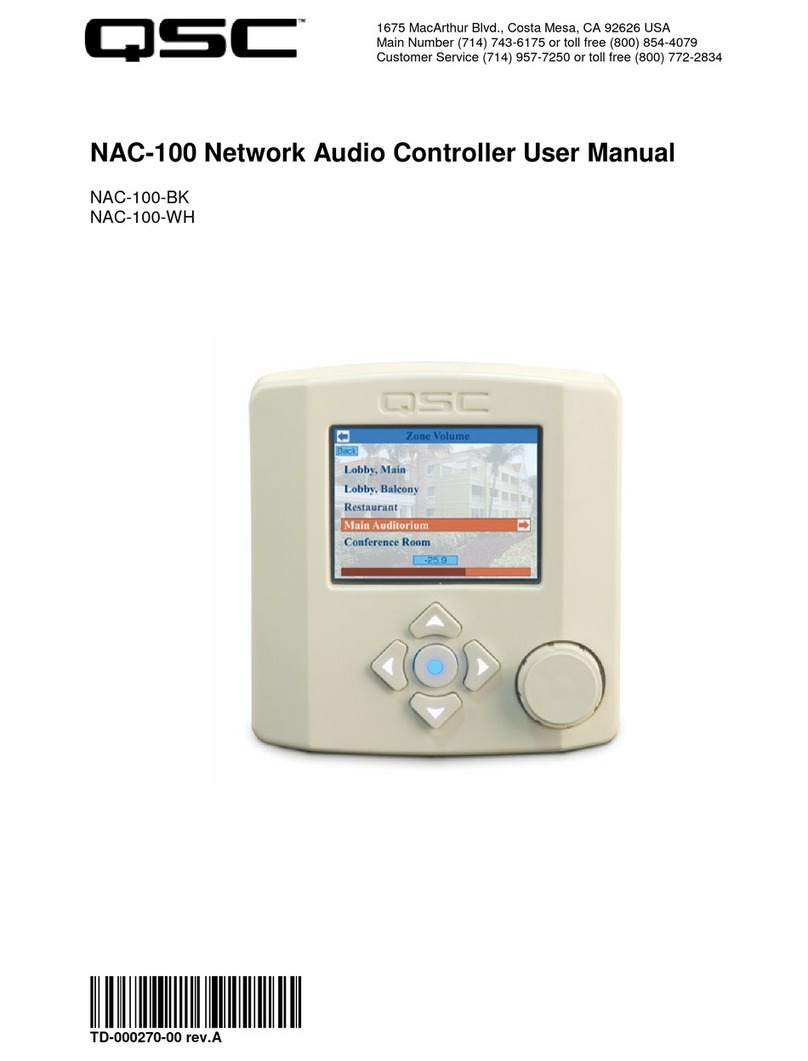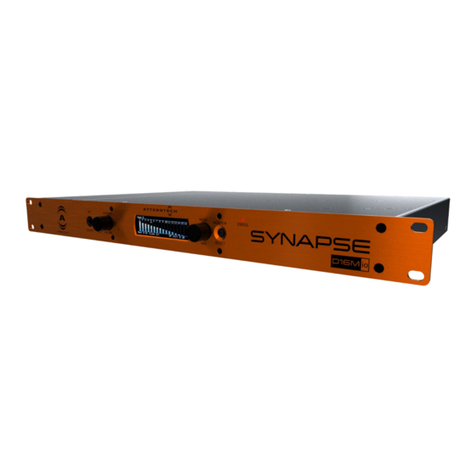
1
I. DESCRIPTIONI. DESCRIPTION
I. DESCRIPTIONI. DESCRIPTION
I. DESCRIPTION
The SEQ-2 is an embedded stereo (dual-channel) five-band graphic equalizer accessory for use with select QSC power
amplifiers. Compatible amplifier models and lines, both current and discontinued, include:
• All PLX (original series), two-channel CX, and two-channel DCA models (with a BSC-3 or BSC-5 BusCard installed)
• All four-channel CX and DCA models (with a BSC-7 BusCard installed)
• PowerLight models PL 1.0, PL 1.0HV, PL 1.4, PL 1.5X, PL 1.6HVX, PL 1.8, and PL 2.0HV (with a BSC-2* or BSC-4 BusCard installed)
• PowerLight models PL 3.4, PL 3.8X, and PL 4.0 (with a BSC-6 BusCard* installed)
• All MXa models (MX 1000a, MX 1500a, MX 2000a, and MX 3000a; Note: does not include MX 700), which use Level 1 Open
Input Architecture
• All EX models (EX 800, EX 1250, EX 2500, and EX 4000), which use Level 2 Open Input Architecture
• Legacy CX models CX6, CX6T, CX12, and CX12T, which use Level 1 Open Input Architecture
* When the SEQ-2 and BusCard are installed in an amplifier, access to some or all of the SEQ-2’s trimpots is restricted.
Using the SEQ-2 as a default EQ is ideal for rental sound systems, since it virtually eliminates the possibility of unauthorized
tampering with settings or other such user errors.
Physically, the SEQ-2 is a small circuit card that mounts inside the amplifier. EX, MXa, and legacy CX amplifier models that use
Open Input Architecture have a two-section row of 22 solder holes called a “Mini Slot” on their input boards. This is where
the SEQ-2 is installed. The input board is part of the removeable input module, so the SEQ-2 can be installed without opening
the amplifier chassis or even removing the amplifier from its equipment rack.
Other models such as the PowerLight, PLX, DCA and CX
series require the installation of an appropriate BusCard in
order to provide a slot for the SEQ-2. Depending on the
amplifier model, a BusCard can provide as many as four
slots for accessory cards. Each slot is equivalent to the “Mini
Slot” of the older amplifiers’ Open Input Architecture. For
ease of installation, it is best to mount the SEQ-2 to the
BusCard before installing the BusCard itself inside the
amplifier. NOTE: The PLX2, PowerLight 2, and PowerLight 3
series amplifiers are not compatible with BusCards.
The installation process involves soldering, so only qualified
technical persons should attempt to install the SEQ-2; ideally,
you should enlist QSC’s Technical Services department or an
authorized service center to perform the task. The installation
section of this manual offers more information about installing the SEQ-2.
II. FEAII. FEA
II. FEAII. FEA
II. FEATURESTURES
TURESTURES
TURES
Both channels feature electronically balanced input circuitry and five bands of fixed-frequency boost/cut filtering. Figure 1
shows the audio spectral characteristics of the filtering circuits. Either channel can be bypassed or engaged by placement of
a jumper on the SEQ-2 card.
The SEQ-2’s standard filter section frequencies are set in two-octave intervals: 40 Hz, 160 Hz, 630 Hz, 2.5 kHz, and 10 kHz;
however, the equalizers can be constructed with custom frequencies. The standard Q (center frequency ÷ bandwidth at ±3
dB points) of each filter section is 0.75, but that figure can also be customized.
SEQSEQ
SEQSEQ
SEQ-2 STEREO FIVE-B-2 STEREO FIVE-B
-2 STEREO FIVE-B-2 STEREO FIVE-B
-2 STEREO FIVE-BAND GRAND GR
AND GRAND GR
AND GRAPHIC EQUAPHIC EQU
APHIC EQUAPHIC EQU
APHIC EQUALIZERALIZER
ALIZERALIZER
ALIZER
Copyright © 2000, 2003, 2010 QSC Audio Products, LLC. All rights reserved.
Figure 1. Boost and cut response curves of the SEQ-2
